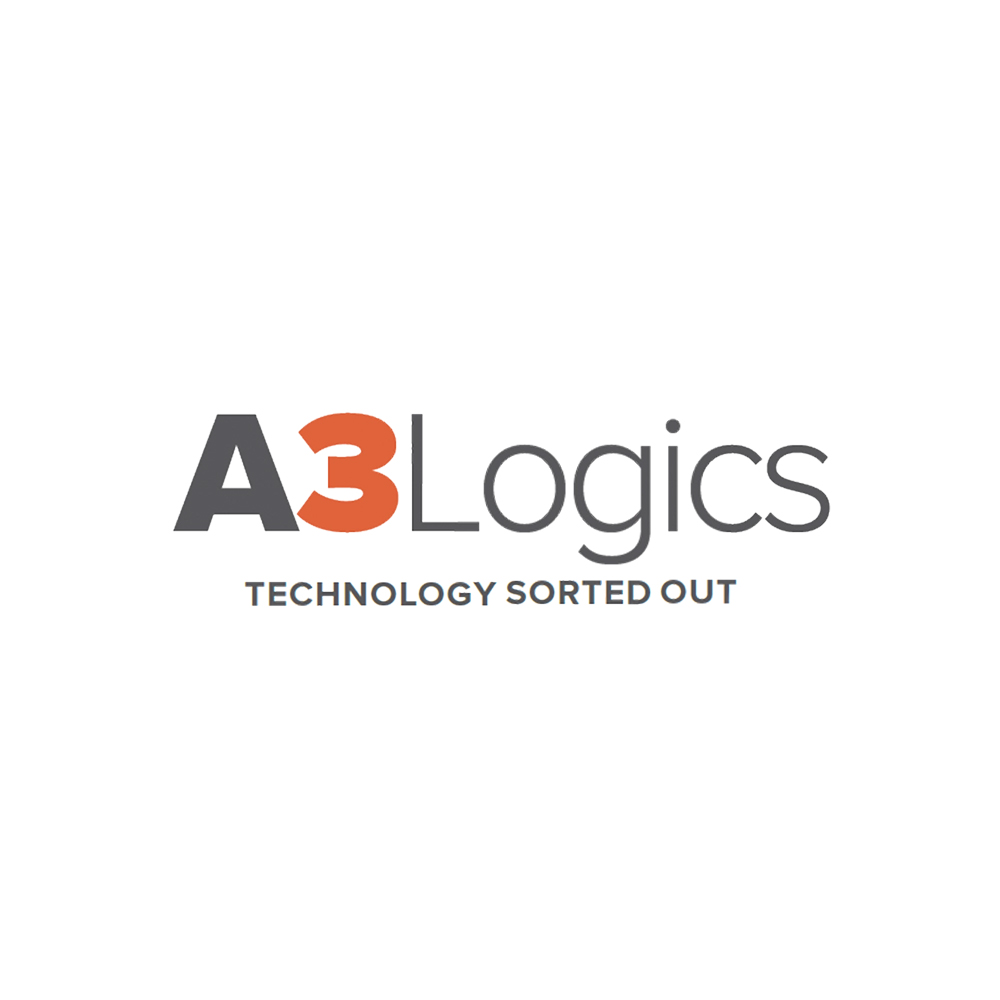In the evolving American economy, healthcare is rapidly growing but expensive. The high costs challenge those without the financial means for medical expenses. Many people are unaware of the variety of medical coverage options available.
Here’s a key point: nearly 29 million Americans currently lack health insurance, per the U.S. Census Bureau. This gap underscores the need for comprehensive healthcare insurance. Understanding health insurance plans and finding the right coverage for your needs is crucial.
We also explore Electronic Data Interchange (EDI) solutions, which are essential in modern healthcare management. EDI makes healthcare claims processing quicker and more efficient. By adopting EDI, costs related to paper, printing, duplication, storage, filing, postage, and document retrieval are cut by at least 35%.
Moreover, EDI solutions in healthcare can lead to significant savings. Projections show that by 2030, the EDI market in healthcare could reach $9.18 billion, growing annually at 9.6%.
As we discuss these topics, understanding their impact on personal finances and the efficiency of the healthcare system is vital. Join us as we dive into healthcare insurance and the transformative role of EDI solutions in healthcare management.
What Is a Health Insurance Claim or Mediclaim?
A healthcare insurance claim is a process in which a medical insurance policyholder submits its request or bills to the insurance company to get the services related to their health insurance policy. The health insurance policyholder has two options, either to acquire a direct claim settlement possibility which is also known as a cashless treatment or they can go with the reimbursed method to avail the healthcare services.
Through this way, one can submit or request the claim form to the healthcare provider for reimbursement or cashless services, whichever they like. Apart from this, these medi-claim bills contain unique medical codes that have detail for the patient visit. On the other hand, Enterprise Mobility Management Services can also help professionals to get more efficiency and effectiveness. Back to the point, these codes help medical providers with various services such as diagnosis, medical supplies, pharmaceuticals, medical transportation, and so on. Once the patient is done with the services, the providers share a claim with them that contains the charges for their visit through the relevant medical codes.
Later, the insurance provider examines the medical codes to understand the reimbursement of their services. As we know these healthcare insurance plans are the financial support that you may need in a medical emergency. However, these plans come up with various advantages that everyone can acquire, even the owners of enterprise software development company.
There are various aspects that revolve around the healthcare plans such as coverage for hospitalization, post-hospitalization expenses, cost of medication for the insured, expenses for when the insured does not earn, the expense of purchasing medicines, cost of emergency services. In conclusion, you need to file a claim to avail of the healthcare benefits as an insured person.
Simplify Data Exchange: Explore Our EDI Services
Reasons To Choose A Health Insurance Plan
As per EDI services experts, make sure consider subscribing to health insurance for various reasons, such as:
Protection for all:
Health insurers provide comprehensive plans that address all the medical needs for an entire family, with hyper-customisation as an option allowing you to select health plans which provide comprehensive protection without breaking your wallet.
Have a comprehensive family health cover will keep your family protected against untoward incidents while giving them access to optimal healthcare insurance facilities.
Safeguard against lifestyle illnesses:
Modern lifestyle diseases, including diabetes, obesity, heart disease and pulmonary ailments are becoming more and more prevalent. While such ailments once only affected older individuals due to increased stress and inactivity levels, their impact is now reaching into younger generations as well.
Unprepared to deal with an illness or condition could mean losing out financially on tests and medication as many of these conditions are chronic. A comprehensive health insurance policy protects from bills arising during regular checkups while helping cover medication expenses.
Safeguarding your savings:
If illness or accident strikes your family and without comprehensive health coverage you find yourselves needing effective medical facilities quickly, your savings could quickly vanish into thin air without adequate protection in case something arises that requires costly treatments – but having health insurance ensures this risk won’t happen!
Provide protection from medical inflation:
Inflation continues to climb across all categories of goods and services. Thanks to medical breakthroughs like new drugs being released onto the market, costs for treatment continue to escalate steadily.
Consultation costs, medication prices, hospital stays and ambulance fees continue to skyrocket and subscribing to an adequate health insurance plan may help keep up with inflation – giving you quality treatment without worry over inflationary spikes over the long-term.
What Information Is There In The Medical Claim?
Medical Claims comprises two major parts: the claim header and the claim detail. These files own the specific details of each patient they encounter with. We will start this section with an understanding of the claim header first. Before proceeding ahead, make sure to understand the Healthcare EDI Checklist.
What Is a Claim Header?
This segment under the medical claim summarizes the critical information in the claim. The confidential data of patient such as zip code, date of birth, and gender falls in this category, Not only but the claim header also contains some other data related to the complete charge for the claim, Primary diagnosis code, details of the patient’s insurance company, diagnosis-related group (DRG), National Provider Identifier (NPI) for the attending doctor and the service facility along with Inpatient procedure.
What Is Claim Detail?
Here comes the Claim detail after the claim header. This segment contains the necessary details about the secondary diagnoses or other administrative procedures that happened during an inpatient hospital stay. Claim details consist of the Date of service, a charge for the service, Procedure code, attending physician’s NPI number, National Drug Code (NDC), and Corresponding diagnosis code.
Hey, wait! Are you aware of virtual healthcare? Now it is important to know about the types of health insurance claims, right? Keeping this in mind we are sharing two major medical claims.
How Does Medical Claim look?
This is one of the most frequent questions that every newbie asks in the healthcare insurance sector or someone who is new in the EDI 834 landscape. Let us tell you, the medical claim contains seven major steps, they are as follows:
- Patient registration: This is the primary step in the medical billing process. Once the patient shares their confidential details and insurance information. with their provider, then only registration gets completed.
- Insurance Eligibility Verification: Once the patient has registered himself, the care provider will verify the patient’s insurance to confirm the coverage for the care.
- Medical Coding: This is the critical step that comes after the administration. Care providers now transcribe their notes and other medical documentation into regulated medical codes.
- Charge Entry- This is the last step just before the care providers share the claim for payment. The medical billing executive will list the charges.
There are various healthcare software that can help you in boosting up your business, back to the point. The above-mentioned steps track the complete claim journey from the starting of the healthcare facility to receiving the bill from the insurance agent.
Things to Keep In Mind While Looking For Health Insurance Policies
Comparing various health insurance plans online to locate the ideal policy is crucial when looking for online health coverage, but what parameters should I look at while making my selections? Below are three items to keep an eye out for when searching health plans as per the top heathcare EDI services experts:
Customer Reviews and Complaints
As with anything purchased online, reading reviews before choosing a provider is crucial when purchasing health insurance online. Don’t risk your investments with providers with many complaints against them as these could compromise the stability of your investment portfolio.
Claim Settlement Ratio of an Insurer
Rule of Thumb – Always check the claim settlement ratio when choosing an insurer. When reviewing multiple policies, selecting an insurer with an impressive claim settlement ratio would likely provide greater security to your investment than one with lower ratios could.
Claim Settlement Ratio (CSR) measures an insurer’s claim settlement capabilities. A high CSR increases your chances of claim settlement provided you comply with their terms and conditions.
Cashless Hospitalization
A traditional health insurance policy requires the policyholder to pay hospital bills out-of-pocket before receiving reimbursement; while this approach might work for some, for most it’s less convenient due to limited or no liquidity. Thankfully, many health insurers now offer this perk when purchasing health coverage online.
With cashless hospitalization, no first payment needs to be made; your insurer directly pays it instead – provided that the hospital you select falls into their network of hospitals.
As part of your online health insurance comparisons, make sure that the insurer you select includes your preferred hospital network in their network.
Financial Well Being of the Insurer
No one wants an insurer with poor financial capabilities handling their claims; therefore it is vital that you do your homework when selecting an insurer and examine their cash flow and solvency ratio as this indicates their capacity.
No Claim Bonus
NCBs are incentives offered by some health insurance companies in India to policyholders for not making claims within an annual cycle. To maximize benefits and savings, selecting an insurer that provides this feature would make financial sense as an individual policyholder and is highly advised! It would certainly make financial sense! It is highly advisable that policyholders search out an NCB offering insurer!
Let’s understand the type of Medical Claims:
It is evident that people are buying medical claims as a promise to support them in tough and challenging times. We are sharing the types of Medical Claims or Health Insurance for you.
1. Preferred Provider Organization (PPO)
In this health insurance plan, employees can use a network of hospitals and physicians. In the PPO plan providers are agreed to cater their services at a discounted or negotiated rate. However, employees don’t really need to designate the primary care physician, but they still have the choice to see any doctors or specialists according to their choice within the network.
2. Health Maintenance Organization (HMO)– Health Insurance Plans
With this health insurance plan, employees have less flexibility in terms of choosing the choice of physicians or hospitals as compared to other plans. Employees covered under HMO are required to select a primary care physician (PCP), but if they want to see a specialist, it is important to go with PCP.
3. Point of Service (POS) — Health Insurance Plans
POS plans conjoins with HMO And PPO plan. Just like these panels, employees can select Primary Care Physician (PCP) from the plan’s network sources. POS is suitable for those who want flexibility while choosing physicians and other sources.
4. Exclusive Provider Organization (EPOs) — Health Insurance Plans
EPO and HMO work on a similar basis for the network of physicians. Employees’ members can have Primary Care Physician (PCP) that will help them in providing referrals to in-network specialists. Here, EPO members are in charge of small co-payments and also may require a deductible.
5. Indemnity Health Insurance Plans — Health Insurance Plans
It is also called fee-for-service plans for its pre-arranged amounts or portions of costs reimbursed to the member for covered services. The reimbursed member may be in charge of deductibles and coinsurance amounts.
6. Health Savings Account (HSA) — Health Insurance Plans
An HSA is a tax-favored savings account that is utilized in connection with an HSA-compatible to qualify for medical expenses. Health Savings Account can also be conjoined with the group health insurance. It can be owned by small businesses and employees so that they can contribute to the group policy if they want. However, HSA is considered to be a good option for small business owners.
7. Health Reimbursement Arrangements (HRAs)
In this health insurance claim, employers reimburse employee’s premiums and even help them with medical expenses. However, Health Reimbursement Arrangements also owns its variation based on the user’s requirements. We shall discuss it later.
Advantages to Get When you Buy Health Insurance Online
Now that everything can be purchased online, buying health insurance has never been simpler or more accessible. Here are all of its benefits.
Comparison Has Never Been This Simple
Now that nearly every health insurance provider has their own website, gaining all the information you require is much simpler and comparison easier for prospective buyers. Now it is easier than ever before to compare policies based on benefits, claim settlement ratio, reviews and financial standing of healthcare insurance firms.
No Need to Visit Health Insurance Companies Now
Now that health insurance can be purchased online, purchasing policies or getting any doubts cleared no longer involves numerous trips to health insurers; healthcare is now just a click away!
Additionally, when purchasing health insurance online you are avoiding face to face interactions, which is ideal for individuals who do not wish to engage in personal discussions with an insurer.
Efficient Customer Services
Due to digitalisation, customer services have become extremely useful and reliable. When purchasing health insurance online, customers are supported with efficient customer services when buying health coverage online as well as during its term if any difficulties arise during policy activation or renewal.
Premium Calculators Are Now Available.
Most health insurance providers now offer premium calculators online in order to streamline the purchasing experience. An approximate premium calculator gives a quote based on age, gender and health condition – this helps buyers make informed choices when they shop health insurance online. Conversations between an insurance provider and themselves.
Steps To Keep In Consideration While Raising A Claim
Medical emergencies can be stressful situations and you might forget the claims process in such circumstances. Here are a few key things you should keep in mind in such circumstances as per the top EDI solution providers –
- Be mindful that health insurance claims only apply within your chosen limit of sum insured coverage, should your claim exceed this figure and incur excess payments to pay yourself. Therefore it’s advisable to verify the amount insured as part of selecting an adequate policy coverage plan.
- Required Documents – Along with your pre-authorisation form and original medical documents, other necessary documentation to process your operation such as ID proofs, bills of equipment/tools used during surgery, cancelled cheques and copies of policy plans may also be requested by service providers.
- If opting for cashless claims, be sure to keep a list of partner hospitals handy just in case an emergency arises.
- Keep track of the timeline when filing claims; noncompliance could delay their processing and prevent you from accessing cashless claims facility.
- Be Wary of Exemptions – Every health insurance policy includes some exceptions which you should be mindful of in selecting your policy coverage accordingly. Any exemptions won’t receive coverage so choose wisely!
- Renew your health insurance policy as soon as it lapses if it expires; otherwise you will no longer be eligible to make claims should its coverage disappear.
Unlock The Power of EDI in Your Healthcare Business
Emerging Trends in Health Insurance Claims
The healthcare insurance sector is evolving rapidly, driven by new developments and technology. This change is toward more efficient, user-friendly systems, meeting the changing needs of consumers and the pace of technology.
Digital platforms for health insurance claims are a major trend. They simplify interactions between policyholders and insurers, making claim submission and tracking easier and faster. This digital move improves the user experience and cuts down on processing time.
Another trend in healthcare insurance is the use of advanced data analytics. Insurers analyze big data for insights into claim patterns and customer behavior. This leads to personalized plans, trend prediction, and better fraud detection. It enables insurers to better understand and meet the needs and risks of individual policyholders, providing better coverage at competitive prices.
Telemedicine is changing the way health insurance claims work. It reduces the need for in-person doctor visits, making healthcare more accessible and streamlining the claim process. The digital documentation in telemedicine speeds up the claims process.
Integrating technology in healthcare insurance is not just about digital platforms and data analytics. A key development is the rise of EDI 834 service providers. EDI (Electronic Data Interchange) exchanges health insurance enrollment information between employers and insurers. The EDI 834 format is changing the management of health insurance enrollments and updates.
EDI 834 services provide seamless, error-free data transfer, which is essential for large organizations handling employee data. This automation saves time, lowers the risk of manual errors, and improves the quality of health insurance services.
Artificial intelligence (AI) and machine learning are also used in health insurance claims. AI automates tasks like data entry and claim processing, making the process faster and more efficient. Machine learning models predict the likelihood of claim acceptance or denial, helping to set realistic expectations for policyholders.
Navigating the Legal Aspects of Health Insurance Claims
In healthcare insurance, it’s essential to know your rights and responsibilities. This knowledge equips you to handle any potential issues. Understanding your health insurance policy’s terms, coverage, and exclusions is essential for every policyholder.
You have the right to clearly explain benefits and a transparent claims process. It’s important that your insurer communicates openly, and you should know that you can appeal their decisions. Providing accurate and complete information, including your medical history and treatments, is crucial. Incomplete or incorrect information can lead to complications, including claim denial.
Disputes, such as disagreements over claim denials or reimbursements, are common in healthcare insurance. First, review your policy and gather all necessary documentation to address these. If a dispute remains unresolved, escalate the matter to your insurer’s grievance department.
If the dispute still isn’t resolved, external assistance, such as from a state insurance commissioner’s office, may be needed. They can provide guidance and intervene if necessary. However, legal action requiring a specialized lawyer should only be considered a last resort due to the complexity and cost involved.
For issues related to healthcare EDI (Electronic Data Interchange), the approach is similar. EDI in healthcare is crucial for the electronic exchange of healthcare data, including claims. If you face problems with EDI, like data errors or delays, contact your insurer or an EDI service provider in the USA. Though the technicalities of EDI can be complex, these providers should offer clear explanations and solutions.
Stay HIPAA Compliant with Our EDI Services for Healthcare!
The Recap
Our discussion highlighted the crucial role of Electronic Data Interchange (EDI) services in healthcare insurance. EDI has been a game-changer, making data exchange faster and more accurate, boosting healthcare efficiency.
We delved into the importance of understanding medical claims and health insurance policies. Knowing the ins and outs of claim settlement ratios, customer feedback, and the concept of cashless hospitalization is vital for informed decisions.
The option to buy health insurance online has made comparing and choosing plans easier and more transparent. We also discussed key steps in the claim process, emphasizing the need to understand and follow these steps for a hassle-free experience.
Choosing the right healthcare insurance involves balancing health needs and financial capacity. The ideal plan offers maximum coverage at an affordable cost. Keeping up with the latest trends in healthcare insurance is crucial, as they can influence your decision and experience. As we conclude, remember that picking the right health insurance is about understanding various plan types and your rights and responsibilities as a policyholder. A3Logics is right there to help you.
Also read: EDI 834 and Other Healthcare Transactions
FAQs
What determines my health insurance premium?
Health insurance decisions depend on various variables, including age, medical history and family medical history as well as lifestyle habits and policy tenure.
What are the basics of renewing my health insurance policy?
Most short-term health insurance policies (short-term plans) have an annual coverage period, after which they expire. Renew your health policy as soon as it comes due. Most policies provide for an extension period of 30 days during which time to keep accumulated benefits in effect. When buying online health insurance plans allow this feature.
What types of health insurance can I purchase online?
There are three primary forms of health insurance policies most often encountered. It includes individual health, family floater health and group health insurance policies. You can buy health insurance online by selecting the policy type which most fits your requirements.
Can I purchase health insurance online, and is that an effective decision?
Yes, buying health insurance online is indeed possible and may even save time from multiple visits and calls to different insurance providers. Just make sure that the health insurer you purchase from has an established name before proceeding further with their transaction.
What are the key exclusions found in health insurance policies?
Standard health insurance policies generally don’t offer coverage for dental and cosmetic procedures, injuries caused by self-harming and therapies like acupuncture and naturopathy. Furthermore, preexisting medical conditions are typically excluded and have a waiting period ranging between 2-4 years depending on which company provides coverage.
How Does Cashless Hospitalization Work?
Cashless hospitalization is a key feature in many healthcare insurance policies. It means you don’t need to pay hospital bills upfront. Instead, your insurer directly settles the costs with the hospital. This option is only available at hospitals within the insurer’s network. To use it, show your health insurance card and obtain pre-authorization from your insurer.
Can I Change My Health Insurance Plan Type After Purchasing?
You can often change or upgrade your health insurance plan when you renew it. This flexibility lets you adjust coverage to match your evolving health needs. But, switching plans may require additional underwriting and could alter your premium. Always check with your insurer for specific details before making changes.
What is a Health Savings Account (HSA) and How Does It Work?
A Health Savings Account (HSA) is a tax-friendly savings account to help with out-of-pocket medical expenses. It pairs with a high-deductible health plan (HDHP). Contributions to an HSA are tax-deductible. The money in the account grows without tax, and you can use it for qualified medical expenses, like deductibles, co-payments, and other costs not covered by insurance.

An IT company delivering the best in a constantly changing world. Our passion is to create feature-rich, engaging projects designed to your specifications in collaboration with our team of expert professionals who make the journey of developing your projects exciting and fulfilling. Get a 30 Min free consultation to convert your dream project into reality.










![10 Top IoT Security Solution Providers in USA [2024]](https://www.a3logics.com/blog/wp-content/uploads/2024/04/New-Project-4.webp)

